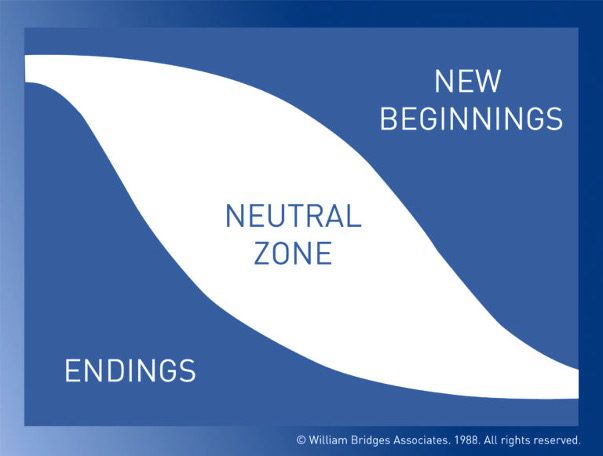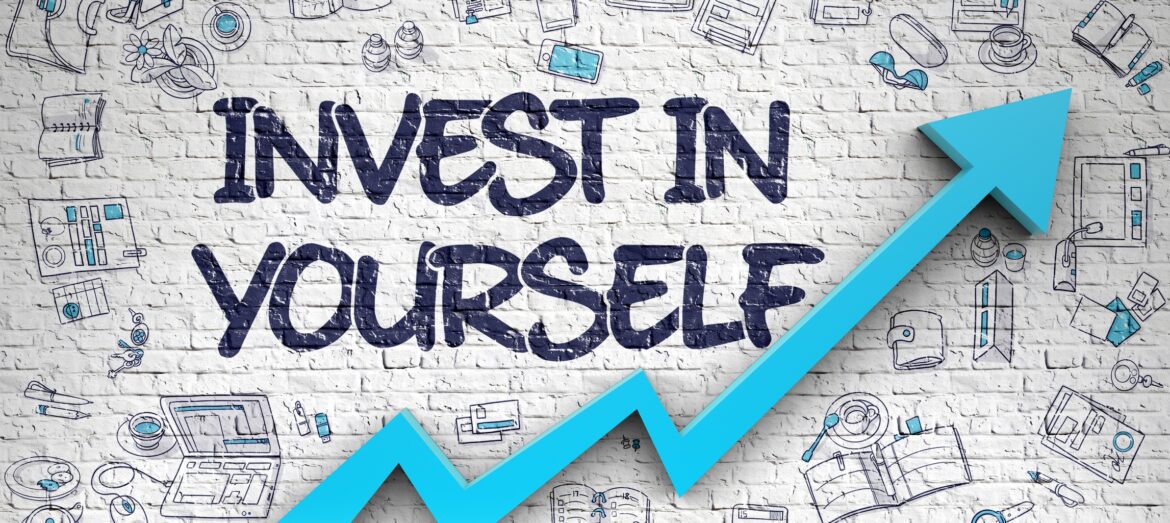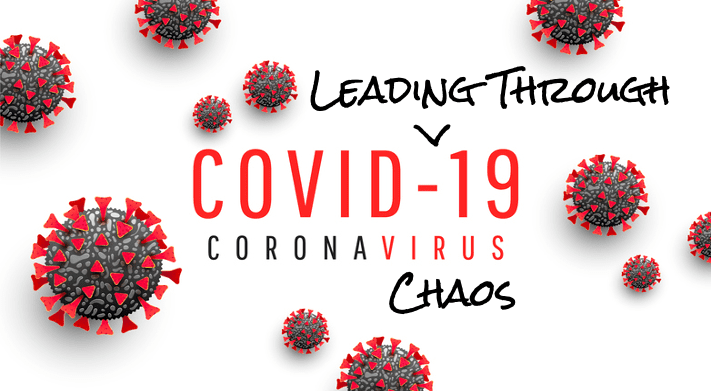Charting Your Development Journey
Hopefully by now the confetti of the new year has settled, and you are back into a routine and focusing on your key priorities for the new year. As a culture we are good at defining KPIs, financial metrics, and organizational goals. What we are not as good at is creating goals that support our leadership development.
In our leadership programs, we challenge leaders to think about their context which could include a new position, being part of a new team, or just having a higher level of presence and influence. Based on evaluating that context, we encourage leaders to reflect on what leadership skills they want to develop. At StarQuest, we use the Leadership Circle™ competency model as a reference tool to help leaders identify whether they want to focus skills more on people/relationship skills or results/task skills. This decision is often informed by doing a 360 assessment to gain insights into the areas that are most important.
We also encourage leaders to meet with their managers to discuss what they want to grow and develop and to ask what their manager considers to be important. Once a competency area is defined, the development planning begins.
A very effective framework we use is colloquially known as the “One Big Thing” (OBT) structure. I first became acquainted with the OBT structure in Bob Kegan and Lisa Lahey’s book, Immunity to Change. Our clients found the structure and language to be very effective. What is one development skill that you are committed to improving, and what behaviors do you want to stop doing and what do you want to start doing. The framework is simple, and yet very effective in helping leaders have development conversations.
For those of you who want to put more structure and discipline around your development efforts and/or those of your team members, please download our professional development plan. We outline the OBT process and connect it to what matters most to you.
If you have any questions, please email your questions to [email protected]. If you are interested in our leadership development and coaching solutions, email us at [email protected].
Structurally Refocusing To Overcome Busyness
First, a tired but true acknowledgment: This year has been hard. We’ve adapted to tough circumstances despite profound losses. And yet, I feel a sense of hope as vaccines make their rounds and we inch towards a life free of COVID-19’s burdens. Things are looking up.
Yet organizations are still very much in the residual shadows of the virus. Perhaps physical offices are reopening, but a palpable uncertainty remains. Employees are jittery about the economy and the status of their jobs. What will the post-COVID work environment look like? Perhaps most importantly, leaders are uncertain how to effect positive change. Indeed, change is a tough pitch at a time when “normalcy” is basically all we’ve wanted for the last 13 months.
When employees and leaders are burdened by uncertainty and doubt, they usually fall back on a harried form of busyness without purpose. Leaders focus on “urgent” but not important items. The days feel full but directionless. If this sounds familiar, you’re in good company. But it’s time to structurally refocus.
Most organizations have finalized their strategic plan for the upcoming year and have identified their strategic goals or, what Jim Collins has aptly named, their “Big Hairy Audacious Goals” (“BHAGs”). As the phrase implies, these BHAGs can be intimidating, and because they have longer timelines, they often get lost in the day-to-day. Before you launch into Q2, it’s time to do a strategic reset and reintroduce structure to help you focus.
Step 1: Do a Mental Download
I suggest blocking out some time and writing down everything floating around in your head on sticky notes (a Word doc works too).
Step 2: Apply a Structural Approach To Help You Organize
Then, zoom out and implement an objective-based structure. I recommend adopting the “OKR” methodology championed by John Doerr in his book, Measure What Matters. Here are the basics: Identify your Objective, which is “what” you and/or your team want to achieve. You may have multiple objectives that support your larger BHAG. Once your Objective is identified, then shift your focus to the Key Results, which are “specific, time-bound, and measurable” progress markers for achieving your Objectives. Here’s an example:
BHAG: Become a more customer-driven organization
Objective 1: Use data-driven insights to better understand the customer’s voice
Key Results:
- Sales to conduct 25 interviews with accounts that we have lost in the past 12 months
- Marketing to launch a customer pulse survey to over 1,000 end-users
- Senior team to conduct five in-depth meetings with members of our customer advisory board
Objective 2: Increase sales revenue by 15% in Q4
Key Results:
- Hire 7 new sales reps for the sales team by the end of Q2
- Generate 10K leads and convert 35% into new sales opportunities by the end of Q3
- Reduce closed/lost opportunities from 100 to 25
Step 3: Try to Place Your To-Do’s into the BHAG Framework
See if you can place your sticky notes (or copy and paste your Word bullets) into the BHAG and OKR structure identified above. If you find it hard to place your to-do’s within the framework, you may have fallen prey to busyness without direction.
So, if you’re feeling overwhelmed or have lost sight of the bigger picture, see if you can brain dump, zoom out, and structurally refocus. You will end your week with a greater purpose and focus for what matters.
Weathering the Pandemic: Leadership Practices to Better Connect with Your Teams
It’s been nine long months in which we no longer shake hands, meet in person, or see each other except on Zoom. The stress and loss affect us emotionally, mentally, and physically. And that’s whether or not we ever test positive for the virus, which continues to be a threat. No wonder many of us are suffering from pandemic fatigue.
As this global storm tests our endurance like never before, it’s relevant to remember the saying, “Leaders bring the weather.” As leaders, we set the mood within our teams and organizations, especially in difficult times. The bad news? This battering crisis continues for now. The good news? We’ve survived long enough to know what three practices can make leaders like you resilient, effective, and positive as we weather the pandemic storm. They are:
Empathy:
Empathy is the emotional glue that connects us, when we can listen, feel for one another, and sincerely understand what others are experiencing. It means being present, engaging at a deeper heart level with genuine concern. People are yearning for emotional connection these days.
We recommend you start every meeting with the simple practice of asking the question, “How are you doing? Really doing?” If someone appears to be struggling, follow-up with a one-on-one check-in. Also, revisit your open-door policy. Prop that door wide open, figuratively of course, and be welcoming and safe at a time when our world isn’t. Relationships can be strengthened with even a few minutes of sincere conversation. A true win, win.
Vulnerability:
Vulnerability is often considered a weakness, when in fact it requires courage. In her book, “Dare to Lead,” Brené Brown describes vulnerability as “uncertainty, risk, and emotional exposure.” It’s a conscious, unsettling release of control. Effective leaders find the courage to admit when they don’t have a solution or make a mistake. They practice and get more comfortable not having the answers and, as a result, seek input from others.
We suggest you start by consciously asking more questions and encouraging team engagement. Teams that have a greater sense of vulnerability have higher trust levels, with less second-guessing. As a leader who values vulnerability, you can create an environment of accountability and compassion.
Authenticity:
Authenticity means you show up in ways that reflect who you truly are and how you feel. Rather than showing the Facebook version of yourself, or armoring up and presenting, you show up and share your whole self. Authenticity can come in the form of addressing tough issues courageously, speaking the truth, and applying your core values to make decisions.
Challenge yourself. Focus on being brave, even uncomfortably authentic. How? By being direct, candid, and honest, while still showing respect and love for your team. You’ll find it surprisingly freeing. Eventually, a sense of balance and openness becomes the norm, your team existing ‘above the line’ in that ideal space that defines a low drama, high performing, healthy work environment.
Construction zone ahead: our findings reveal that effective leaders continually invest in their personal growth. If the practices of empathy, vulnerability, and authenticity could be ordered on Amazon, they’d be in as much demand as hand sanitizer and Clorox wipes. Instead, each one takes practice and long-term commitment on your part. But the proven results, of improved job satisfaction and higher performance overall, make this work important and rewarding.
So roll up your sleeves – not for the vaccine yet – but to reflect on and explore the practices that can make you a better, more resilient leader at a time when your team needs you most.
The Resilient Leader: Deconstructing Self-Talk to Foster Optimism in You and Your Team
During these tough times, optimism can be challenging. But, as leaders, we know our emotions are contagious to our teams and our teams’ emotions are contagious to our business more broadly. Thus, building resilience within ourselves and our teams is critical.
Interestingly, however, many people define “resilience” incorrectly. They think of resilience as muscling through, toughening up, and grinding it out. But research reveals resilience is actually about incorporating consistent, almost ritualistic patterns of thinking and acting. In turn, these patterns allow leaders and teams to stay in a creative space without plunging below the line to reactivity. Today, we’ll unpack some of the patterns of thinking that can lead to resilience by relying on Martin Seligman’s work on “explanatory style.”
I discovered Seligman’s work when my wife was getting her master’s in counseling. I scored “marginally pessimistic” on an optimism test she gave me, and I realized I had some work to do. My wife gave me a copy of Seligman’s book, Learned Optimism. Needless to say, the book has lost none of its relevance. Seligman’s research focuses on a person’s “explanatory style,” which is a term used to describe how someone talks to themselves when faced with adversity. Explanatory style can be broken down across three dimensions:
1. Permanence. Leaders who are optimistic and more resilient see bad situations or events as temporary rather than permanent. For example, they say to themselves, “I didn’t adequately prepare for that presentation” as opposed to “I am always a horrible presenter” or “I never present well.” For the optimist, adversity is temporary and confined in time. For the pessimist, adversity stretches back into the past and/or forward into the future. A fun exercise for observing the concept of permanence is to watch post-game sports interviews with players. How does the player characterize the loss? Did they have a lackluster performance that day? Or is the adversity a permanent characteristic of the team or their season?
2. Pervasiveness. Similar to permanence, pervasiveness describes how an individual confines adversity in space. How broadly does the adverse event permeate? Using the example above, an optimist would confine the adversity to the bad presentation. But a pessimist allows for contagious negativity to spread beyond the adverse incident to other areas. Suddenly, the bad presentation means the person is “not any good at sales” or “not a good fit at this company.”
3. Personalization. Finally, personalization describes how an individual personally characterizes adversity. Personalization doesn’t mean blaming others. A leader can take appropriate ownership of the problem without personalizing the adversity. To use the presentation example again, an optimist confines the adversity to his or her presentation: “My presentation wasn’t very good because I didn’t adequately prepare beforehand.” The optimist owns the lack of preparation but doesn’t internalize the adversity as a deeper problem. Conversely, the pessimist turns the adversity into a deeper reflection of his or her personality traits and internal characteristics more broadly: “I am horrible presenter, I stink at public speaking, and I’m habitually unprepared.”
Often, negative and pessimistic self-talk works across all three dimensions. Still, breaking down the components can sometimes help achieve the mindfulness and clarity to correct negative self-talk. If you’re feeling overwhelmed, reactive, or weary, be more aware of your explanatory style and how you’re speaking to yourself.
As Buddha wisely once said: “Your worst enemy cannot harm you as much as your own thoughts, unguarded. But once mastered, no one can help you as much, not even your father or your mother.”
Leading Through Chaos: Embracing the Neutral Zone in Transitions
As we’re starting to move from COVID-19 crisis management and stay-at-home orders, the conversations are shifting-they are more hopeful and encouraging, but cautious. Transitioning to the new normal will undoubtedly be a slow process. And questions abound as to what the “new normal” will look like at home, at our jobs, in our communities, and for our world more broadly.
As we’ve been working with leaders to help them navigate this sea of uncertainty, Bridges’ Transitions Model has provided a particularly helpful framework. Around for almost thirty years, the model helps leaders and organizations understand how to transition from old paradigms and mindsets to new models and ways of being. The model is insightful because it talks about transitions rather than changes. Changes are external and often beyond our control; they are situations and events. Transitions, on the other hand, are internal and within our control; they are how we react to changes. COVID-19 is a (major) change-how will we transition?

Applying Bridges’ Transition Model to the COVID-19 crisis, most of us are now in the neutral zone. We understand there are changes, and the novelty of the situation has started to wear off. We are looking ahead and asking questions. But while there may be a tendency to rush straight through to the end zone, the neutral zone actually poses an opportunity for innovation and thinking anew about how we work and live.
For leaders today, we should use this neutral zone as a time to reflect, explore, and be curious about our prior ways of doing things. Are there opportunities to improve, innovate, and adjust? It is no coincidence that some of the most cutting-edge companies have birthed new creations through chaos in their transition to a new normal.
So, if you’re working with teams, embrace the neutral zone as a field of opportunity to explore new options. Searching for new opportunities may not mean a complete restructuring of your business. It may be as simple as small changes to drive customer value or boost efficiency, or even resolving to do more of what you love.
If anything is certain with COVID-19, it’s uncertainty. Let’s not accelerate too quickly toward our new beginnings. We may miss a golden opportunity to bring something really amazing into the world, our organization, our teams, or our families.
To learn more about making the most of change, you can check out William Bridges’ book, Managing Transitions on Amazon or find a helpful summary here.





